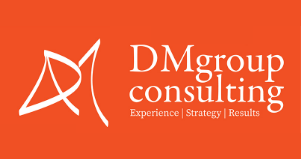Creating a fundraising plan is like drawing a map for your nonprofit’s journey. It guides your efforts, helping you reach your goals efficiently. A solid plan gives everyone involved clear directions and a better understanding of what’s needed to accomplish those objectives.
To get started, knowing who your supporters are and what they care about is important. You need to define clear goals that align with your nonprofit’s mission. Knowing this information helps you focus your efforts where they’ll have the most impact and makes it easier to connect with your audience.
An effective fundraising plan also includes diverse strategies to keep up momentum and reach different people. It’s crucial to keep track of progress and adjust the plan as needed to stay on track. With a clear and flexible plan, your nonprofit is better equipped to meet its fundraising goals and ensure long-term success.
Identifying Your Fundraising Goals and Audience
To build a successful fundraising plan, you need clear goals and a defined audience. Goals give direction and help measure success, while understanding your audience ensures your efforts reach the right people.
Start by setting specific and achievable goals. Think about the amount you want to raise and how that supports your nonprofit’s mission. Break down broad goals into smaller, actionable steps. For instance, if your goal is to raise $50,000, identify mini-goals like securing 100 new donors or increasing donations from existing supporters by 20%.
Next, define your audience. Knowing who supports your mission helps tailor your message and approach. Consider factors like age, location, interests, and donor history. Are you targeting local community members or reaching out to a national audience? Different groups may have different motivations for giving, and understanding these helps in crafting relevant appeals.
Conduct surveys or analyze past fundraising data to gather insights. Look for patterns in donor behavior that can guide your strategy. By clearly identifying your audience and goals, you lay a solid foundation for planning your fundraising activities and increasing your chances of success.
Crafting a Diverse Fundraising Strategy
A diverse fundraising strategy keeps momentum strong and reduces reliance on a single source of income. Utilizing various methods broadens your reach and increases the likelihood of achieving your goals.
Begin by listing different fundraising methods:
1. Online Fundraising: Use platforms like social media and crowdfunding to connect with a wider audience. Share stories and updates to keep donors engaged.
2. Events: Host events such as charity runs, auctions, or galas. Events provide opportunities to meet new supporters and strengthen relationships with existing ones.
3. Major Gifts: Identify potential major donors and build personal connections. Cultivating these relationships can lead to significant contributions.
4. Grants: Research and apply for grants that align with your nonprofit’s mission. Grants can provide substantial funding for specific projects.
5. Monthly Giving Programs: Encourage supporters to donate regularly. Recurring donations provide steady income and foster long-term donor relationships.
After identifying potential methods, assess which ones align with your nonprofit’s resources and strengths. Consider your team’s skills, available technology, and past successes. Create a flexible plan that allows you to shift focus as needed based on results and feedback. Balancing a variety of strategies ensures that your nonprofit remains resilient and adaptable in an ever-changing landscape.
Setting Realistic Timelines and Budgets
Creating realistic timelines and budgets is crucial for a successful fundraising plan. Timelines help keep your team on track, while budgets ensure you’re using resources wisely. Begin by breaking down your fundraising goals into smaller tasks and assign a deadline for each one. Consider the time needed for activities like planning events, crafting donor communications, and processing donations.
Use a calendar to map out these tasks and ensure there’s enough time between activities. Be flexible and allow room for unexpected delays. It’s important to adjust timelines as needed based on progress and feedback.
Next, focus on budgeting. Determine the cost of each fundraising activity and align it with your goals. Include expenses such as marketing materials, event venues, staff hours, and technology needs. Compare these costs with your projected income to ensure your efforts remain profitable.
Create a budget that accounts for both expected and unexpected expenses. Monitor spending closely and adjust your budget as necessary to stay within limits. By setting realistic timelines and budgets, you enhance the efficiency and effectiveness of your fundraising plan.
Monitoring Progress and Adapting Your Plan
Tracking progress and making necessary adjustments is key to keeping your fundraising plan on track. Regular monitoring helps identify what’s working and what needs improvement. Use tools like spreadsheets or dedicated software to record data and track performance against your goals.
Assess each fundraising activity to see how it contributes to your overall objectives. Are donations coming in as expected? Is there enough engagement from your target audience? Regular check-ins with your team provide insights into these areas.
If something isn’t working as planned, don’t hesitate to make changes. Adapt your strategies based on the feedback and results you gather. This can mean shifting resources to more successful activities or reevaluating methods that aren’t delivering results.
Maintain open communication with your team and stakeholders to ensure everyone stays informed. By actively monitoring your plan and making informed adjustments, you create an adaptable roadmap for reaching your fundraising goals.
Conclusion
Creating a fundraising plan that really works involves more than just setting goals and strategies. It requires thoughtful planning, careful execution, and ongoing evaluation. The process becomes manageable when broken down into steps like identifying your audience, crafting strategies, setting budgets, and monitoring progress. Each element plays a vital role in the overall success of your nonprofit’s fundraising efforts.
Remember, fundraising is a team effort and requires commitment from everyone involved. The more aligned your team is with the plan, the better your results will be. Keep communication channels open and encourage feedback to continuously refine your approach.
Are you looking to optimize your nonprofit fundraising planning and ensure success for your nonprofit? At DM Group Consulting, we specialize in strategic planning that aligns with your goals and strengths. Our team is ready to help you design a plan that not only raises funds but also enhances your nonprofit’s impact. Contact us today for a nonprofit consulting to get started on crafting a plan that truly works for you!




